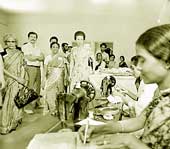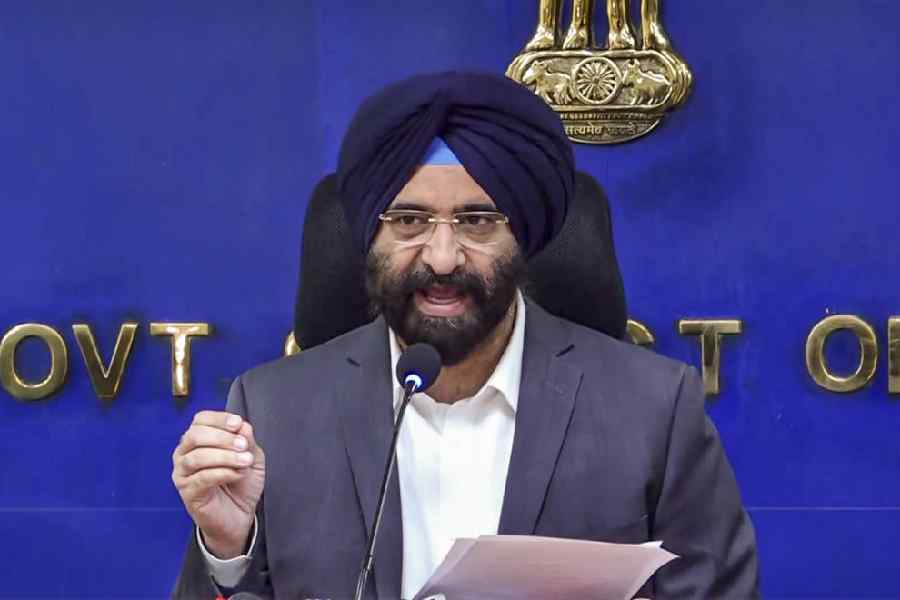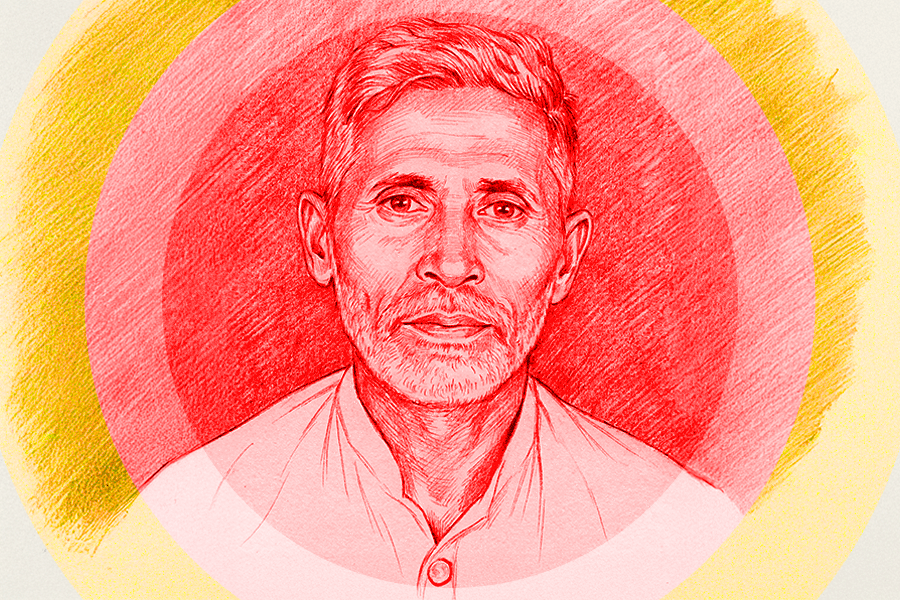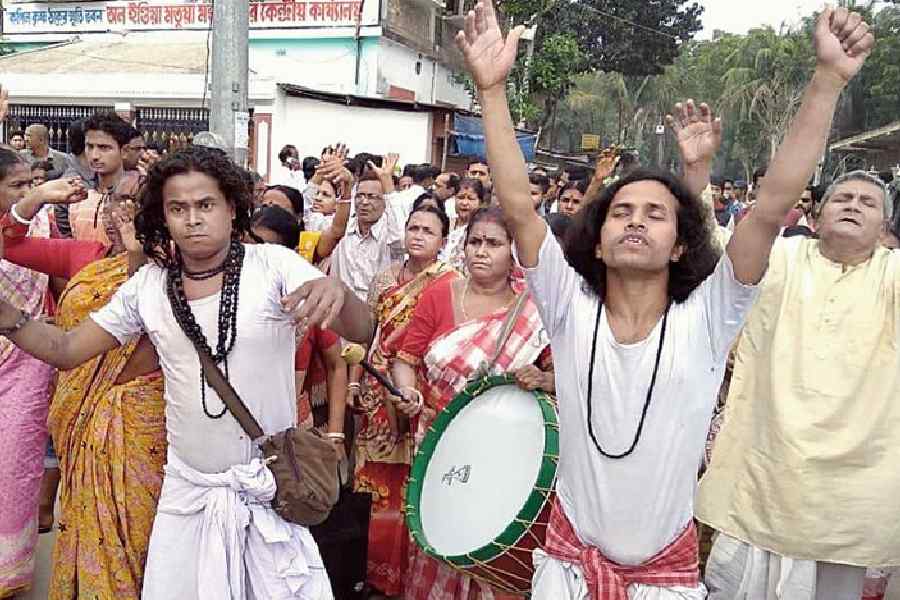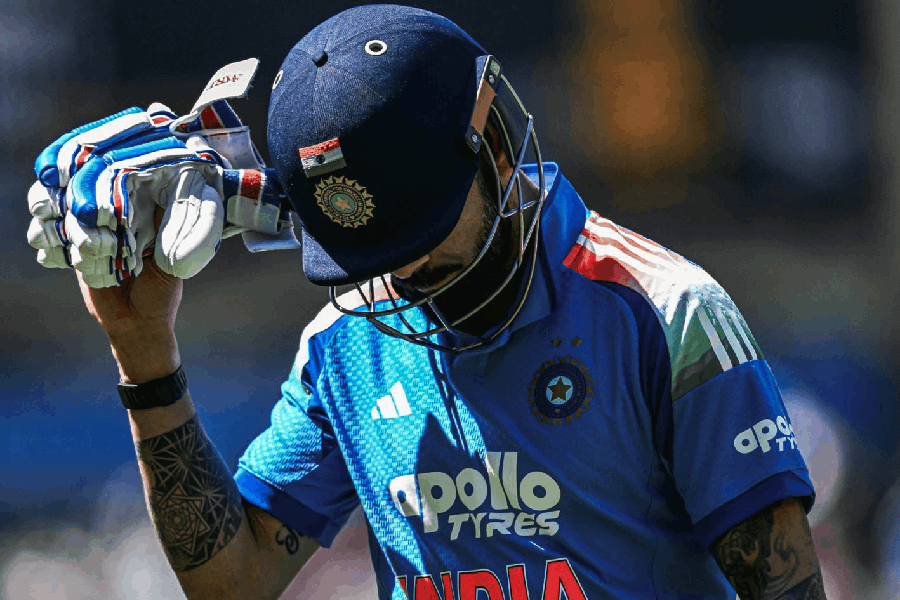|
|
| Romola Sinha (extreme left) with Princess Anne |
I always thought Agatha Christie’s Miss Marple must have looked like Romola Sinha with her delicately chiselled features. She reminded a British Labour Party couple my wife took to the All Bengal Women’s Union, of Sir Stafford Cripps’s wife, Isobel, who chaired the Sino-British Fellowship Trust for 30 years.
Neither comparison meant anything to the generations of girls and women who owed their lives to the shabby sprawling premises at 89, Elliot Road. It did not matter to them that Romolamashi (as I called her) could have talked to Princess Anne of her grandmother when the princess visited ABWU as head of Save the Children Fund. Somewhere in a trunk in 1, Sunny Park were the long white silk gloves she had worn to be presented to the last Empress of India. The women knew only their beloved Rangama.
Social work is the monopoly today of careerists whose high-profile non-governmental organizations command wealth and power. But there were once — perhaps still are — volunteers who drew unstintingly on the social capital to which they were born to help their less fortunate sisters.
Names like fading sepia photographs from an old family album are inextricably linked with causes they inspired, shaped or furthered. Mrs P.K. Roy (never called by her first name, Sarala) and the Gokhale Memorial School. Saroj Nalini Dutt of the eponymous institution also founded the Women’s Institute Movement in India. Sita Chaudhuri and the Nari Seva Sangha. Renuka (Lata) Ray represented the All India Women’s Conference in the Central Assembly and strongly supported Sir Benegal Narsing Rau’s Hindu women’s rights of succession bill. Phulrenu Guha, founding chairman of the Centre for Women’s Development Studies, Kamaladevi Chattopadhyay (an honorary Bengali) and Ila Pal Chowdhuri are others in that category.
Bengal has many heroines. Rani Rashmoni fought for fisherman’s rights. Midnapore’s 72-year-old “Gandhi buri”, Matangini Hazra, gave her life for freedom. Ila Mitra and Hena Das led the Tebhaga movement. Nellie Sengupta presided over the Congress’s tumultuous Curzon Park session. Bina Das, daughter of a good Brahmo Samaj social activist, fired five times at a British governor.
Social work can merge into politics, constitutional or revolutionary. In the land of the Ramakrishna Mission, Bharat Sevashram, and, lately, the Sisters of Charity, social work also often enjoys a religious dimension. Now, a combination of circumstances has turned social work into the preserve of international high finance and organization. Dutch and German charities keep Indian NGOs in cars and computers.
True, there were distortions in Rangama’s time too. The “committee-ka-memsahib” was a figure of fun who let bearers and ayahs care for husband and children while immersing herself in meetings and coffee mornings. An honorary secretary was notorious for sending the institutional car and driver on petty personal errands like fetching the handkerchief she had left behind. Another forgot to pay the rent until a bailiff darkened the door, and the auditors gave up in despair when an honorary treasurer was astonished at the notion of supporting expenses with receipts.
But if some office-bearers were extravagant or scatty, that was because their personal lifestyle was extravagant or scatty, not because they were dishonest or uncaring. They worked for love, bringing to their organizations the same eccentric amateur enthusiasm that marked their households. The charities they patronized needed their contacts and selfless labour; they did not need the charities to gain an entrée into high society, meet important personages or travel abroad.
The ABWU’s origins lie in two laws to control the flesh trade and rescue women and children. When J.N. Basu, an eminent lawyer and social worker, introduced the Bengal suppression of immoral traffic bill in the legislative assembly in 1932, the Bengal Presidency Council of Women and the All Bengal Women’s Conference decided to form an independent organization to achieve its purpose. Thus was born the ABWU, affiliated to the International Abolitionist Federation in Geneva.
Rangama’s organization runs homes for elderly women, rehabilitation centres that provide vocational training, children’s welfare hostels and primary schools. The Sahayika Project trains exploited girls as ayahs and nursing assistants. The Shikshalaya Prakalpo Project provides basic education to school dropouts, and the Swadhar Project works with girls from red light districts. Women with learning disabilities can go there for free legal aid or counselling. There are sponsorship programmes for health and education, a bakery, fine embroidery and textile printing. Calcutta’s very first Bengali restaurant, Suruchi, still serves delectable meals at ridiculously low prices.
Modern management theory claims effective labour must draw wages. That accountability alone imposes discipline. Perhaps. But the charities that women like Mrs Chaudhuri, Mrs Ray and Mrs Sinha successfully sponsored demonstrated that one can be accountable to one’s own self. Conscience is the hardest taskmaster of all.
Bengal would be the poorer without these pioneers. As I wrote when Rangama died, she could not be dead since the ABWU lived.

